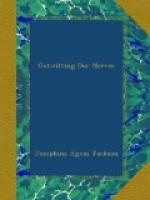=Later Developments.= Little by little, the scientific world came to see that this wild theorizer had facts on his side; that not only had he formulated a theory, but he had discovered a cure, and that he was able to free people from obsessions, fears, and physical symptoms before which other methods were powerless. One by one the open-minded men of science were converted by the overpowering logic of the evidence, until to-day we find not only a “Freudian school,” counting among its members many of the eminent scientists of the day, but we find in medical schools and universities courses based on Freudian principles, with text-books by acknowledged authorities in medicine and psychology. We find magazines devoted entirely to psycho-analytic subjects,[34] besides articles in medical journals and even numerous articles in popular magazines. Not only is the treatment of nervous disorders revolutionized by these principles but floods of light are thrown on such widely different fields of study as ancient myths and folk lore, the theory of wit, methods of child training, and the little slips of the tongue and everyday “breaks” that have until recently been considered the meaningless results of chance.
[Footnote 34: The Psychoanalytic Review and the International Journal of Psychoanalysis.]
=A Searching Question.= We find, then, that when we ask, “What makes people nervous?” we are really asking: “What is man like, inside and out, up and down? What makes him think, feel, and act as he does every hour of every day?” We are asking for the source of human motives, the science of human behavior, the charting of the human mind. It is hard to-day to understand how so much reproach and ridicule could have been aroused by the statement that the ultimate cause of nervousness is a disturbance of the sex-life. There has already been a change in the public attitude toward things sexual.




